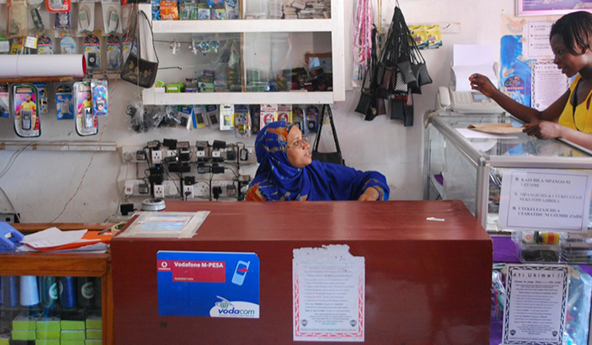Using the Address Verification Service (AVS)

The Address Verification Service (AVS) is a risk management tool that enables merchants accepting card payments in a non-face-to-face environment (e.g. e-commerce, mail order and telephone order [MO / TO]) to verify the validity of the billing address provided by their customers by comparing it to the one on file with the card issuer. Using AVS helps card-not-present merchants minimize fraud and fraud-related chargebacks.
AVS requests are processed in real time or in batches and may be used with or without a transaction authorization request. Typically, the response is received within just a few seconds.
- AVS with an authorization request. You can process AVS requests just as you process transaction authorizations, either in real time or in a batch using a terminal or a computer. Real-time authorization requests are used typically for e-commerce transactions where the customer waits for a response online. Batch authorizations are used for transactions where there is no immediate need for a response. The process of transaction authorization and address verification goes through the following stages:
- A customer places an order in a card-not-present environment.
- The merchant confirms the order information, including the merchandise description, price, card account number, card expiration date and shipping address.
- The merchant requests that the customer provides his or her billing address (the billing address is where the cardholder receives his or her card statements).
- The merchant enters the provided billing address information into its authorization request, along with the rest of the transaction information. Both requests are sent to the merchant’s processing bank that sends them on to Visa or MasterCard.
- The Credit Card Network (Visa or MasterCard) then sends the request on to the card issuer who makes separate decisions on each request. The card issuer compares the provided billing address to the one it has on file for its cardholder. It then returns both the authorization and the address verification responses through the same channel. The address verification response consists of a single-digit code which the merchant’s payment processing company may change to make it easier to understand.
- AVS without an authorization request. In some cases merchants can send an address verification request without a transaction authorization request. Such requests may be made when:
- Merchants want to verify a customer’s billing address before a transaction authorization is requested.
- An earlier transaction authorization request has received an approval but an AVS request has received a “Try again later” response.
- AVS response codes. Listed in the table below are the possible AVS response codes returned by the card issuer.
AVS Response Code
Explanation
U.S.
International X — Match (MasterCard only)
D, M
Address and nine-digit ZIP code match — if the other fraud services raise no suspicions, you should process the transaction. Y — Match
Address and five-digit ZIP code match — follow instructions above. A — Partial Match
B
Address matches but ZIP code does not — a sign of a potential fraud. You may want to investigate further before making a decision.
Z — Partial Match
P
ZIP code matches but address does not — a sign of a potential fraud; follow instructions above.
N — No Match
N
Neither address nor ZIP code match — a strong sign of a fraud. You should take additional steps to investigate the transaction.
U — Unavailable
G, I
The card issuer system is unavailable and the address cannot be verified. You need to make a decision whether to process the transaction without AVS or not.
R — Retry
R
The card issuer system is unavailable — you should try again later. S — No AVS Support
U
If the card issuer does not support AVS you will have to make a decision whether to process the transaction or not based on other criteria.
C — Non-Compatible
Street address and postal code not verified due to incompatible formats. (Acquirer sent both street address and postal code.)
- Using AVS response codes. When developing your procedures for handling AVS response codes, consider the following guidelines:
- Exact Match — X, Y, D, M. Generally speaking, you will want to proceed with transactions for which you have received an authorization approval and an “exact match.”
- Partial Match — A, Z, B, P. Street address matches, ZIP code does not, or vice versa. You may want to follow-up before shipping the merchandise or providing the service. Things to look for in these orders: larger than normal orders; orders containing several units of the same item; orders shipped overnight; orders shipped to an address other than the billing address.
- No Match — N. Neither the street address nor the ZIP code match. Typically a strong indicator of fraud, however the cardholder may have moved recently and not yet notified the issuer or the cardholder may have given you the shipping address instead of the billing address. Actions you should take include: call the customer to verify the phone number, the address and whether the cardholder has recently moved; call the card issuer to determine whether the name, address and telephone number match the information on file; use directory assistance or internet search to contact the individual at the billing address and confirm that he or she initiated the transaction.
- Unavailable, Not Supported, Non-Compatible — U, S, G, I, C. Address information is unavailable for that account number, or the card issuer does not support AVS. Since you now have no way to verify the address, you must decide whether to investigate further, proceed, or cancel the transaction. One solution is to fax a credit card slip to the consumers requesting a signature be faxed-back to actually verify the order.
Image credit: Britishsme.co.uk.

